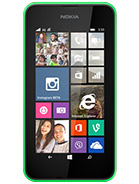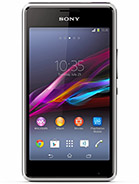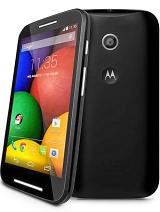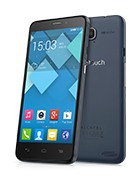GSMArena smartphone shopping guide: August 2014
August 2014
Under €100
If your spending budget is less than €100 then paying even €10 for a premium badge is too much so you have to be willing to look at brands that don't get much exposure in TV ads. That said we tried to strike a balance between bang for the buck and recognizable brand names.
It's not all badge worship, phones of popular brands are easier to find in stores, have a bigger community around them (should you ever have questions) and are generally more likely to get a software update. So maybe that tenner will be worth it.
This category has some very capable devices but if all you need is to get your foot in the door something like the LG Optimus L4 II will run you less than €50 and it's a smartphone. It has a reasonably big 3.8" HVGA (320 x 480) screen and is powered by a single Cortex-A9 core. It won't set any speed records and the Android 4.1 Jelly Bean is getting old but virtually all apps support it.
It has 4GB of built-in storage, just enough for apps, and a microSD card slot to take care of the rest. A 3.15MP camera with 480p video capture should do fine for Snapchat or Vine. The 1,700mAh battery is surprisingly big for this class.
There's a dual-SIM version of the Optimus L4 II for some extra cash.
 LG Optimus L4 II |
Pros | Cons |
|
|
|
If you're willing to spend some extra cash, the Huawei Ascend Y330 doubles the screen pixels and the CPU cores. It has a 4" FWVGA screen (that's 480 x 854px) and is powered by a dual-core 1.3GHz processor. It runs Android 4.2 Jelly Bean, not much younger than the L4 II's OS.
 Huawei Ascend Y330 |
Pros | Cons |
|
|
|
The Nokia Lumia 520 is dirt cheap in the US (Microsoft is practically giving it away) but it's quite affordable in Europe and the rest of the world, too. It has a 4" WVGA screen but it's an IPS for better viewing angles. The dual-core CPU is Krait-based so much faster than the Cortex-A7/A9 offerings and the phone is getting updated to the latest Windows Phone version.
It's the cheapest phone that records 720p video and the 5MP still camera is good too. One of the best perks is that it comes with free voice-guided navigation for a single country of your choice.
 Nokia Lumia 520 |
Pros | Cons |
|
||
| Review | ||
Microsoft put out the new Lumia 530 but it's a bit of a downgrade in our opinion. It has a quad-core processor but it's Cortex-A7 based so the speed advantage is questionable. You also lose the IPS screen and the 720p video capture.
Of course, compared to similarly priced Androids it's still very compelling. We'd still go for the 520 over this one but if you need a second SIM slot then you have to pick the Lumia 530. It comes with free voice-guided navigation for all countries supported by Nokia Drive+ making it an excellent travel companion.
 Nokia Lumia 530 Dual SIM |
Pros | Cons |
|
|
|
The Sony Xperia E1 dual is Android's answer to the Lumia 530. It has a 4" WVGA screen with scratch resistant glass. While on the positive side it runs a quite current Android 4.4 KitKat OS, it's down on power with just two Cortex-A7 cores. It does have Sony's good looks, a 3.15MP/480p camera and a big 1,750mAh battery going for it.
Note that there's a single-SIM version of the Xperia E1 but the price difference usually isn't much (you can always leave the second slot empty when you don't need it).
 Sony Xperia E1 dual |
Pros | Cons |
|
|
|
The Motorola Moto E boasts a slightly better screen than the Xperia, 4.3" qHD (540 x 960), with Corning Gorilla Glass 3. It has 1GB of RAM to improve multitasking performance on the dual-core Corttex-A7 chipset and a 5MP/ FWVGA 480p camera. It's not the thinnest phone around but the 1,980mAh battery lasts a long while.
While it's running the same Android version as the Xperia right now it's near stock, which improves chances of an upgrade down the line. To be fair, Sony has been very good with upgrades recently too.
The Moto E has a dual-SIM option too but that one is yet to drop under €100.
 Motorola Moto E |
Pros | Cons |
|
|
|
| Review | ||
Firefox OS has a mission statement of bringing $25 smartphones but we're not quite there yet. There are a number of sub-$50 devices but those are from local brands. The ZTE Open C is easier to buy and has pretty decent hardware.
A 4" WVGA screen, dual-core Cortex-A7 processor and 3MP camera (with practically nonexistent video recording) aren't exactly what you dreamed of, but you can think of it as a cheap way to try the youngest platform on the market.
Even if you don't buy an Open C, it's good to be aware of the platform as Mozilla is slowly pushing down to its $25 target, which will finally make feature phones obsolete.
 ZTE Open C |
Pros | Cons |
|
|
|
| Friefox OS review | ||
We round off this category with the Alcatel Idol S. It slinks just under the €100 cut-off point but it gives you the mid-range Android experience.
The hardware is surprisingly good. A slender 7.4mm body that weighs just 110g houses an impressive 4.7" 720p screen (IPS to boot). It has Dragon Trail Glass protection and oleophobic coating (to fight fingerprints).
The Idol S is not only the cheapest phone with a 720p screen we're recommending but its 8MP camera is the first so far to shoot FullHD 1080p video. You can also add LTE to its list of firsts.
Something has to give, of course, and it's the dual-core Cortex-A9 processor and relatively old Android 4.2 Jelly Bean. It does have 1GB of RAM though, all-round excellent for a €100 phone.
 Alcatel Idol S |
Pros | Cons |
|
|
|
| Hands-on | ||
Reader comments
- AnonD-322228
- 21 Oct 2014
- 3ar
After a to long wait I am 19 hours into being able to boost my second phone is a Nexus 5 my pride and joy is my OnePlus One .... First none stock android phone I have had.....its like being reborn .....I can not get my Nexus X Sim accepted ..... B...
- xyz
- 21 Sep 2014
- BLg
I would say that htc One E8 is the best budget flaggship one could ask for! M8's sibling and the most premium and latest phone one can buy in around 30-32k
- Tim
- 03 Sep 2014
- ii6
Actually it is true - better than leaky Android with security issues and riddled with spyware.